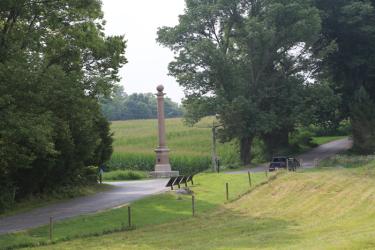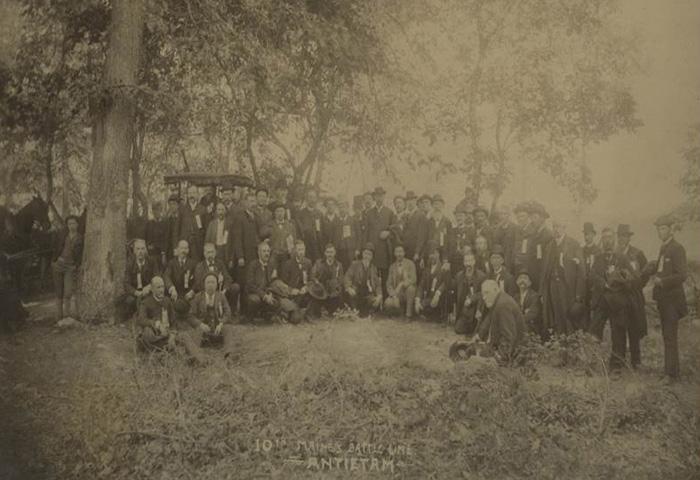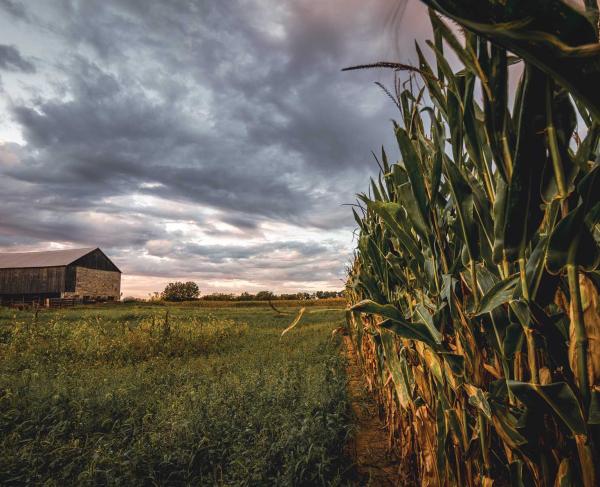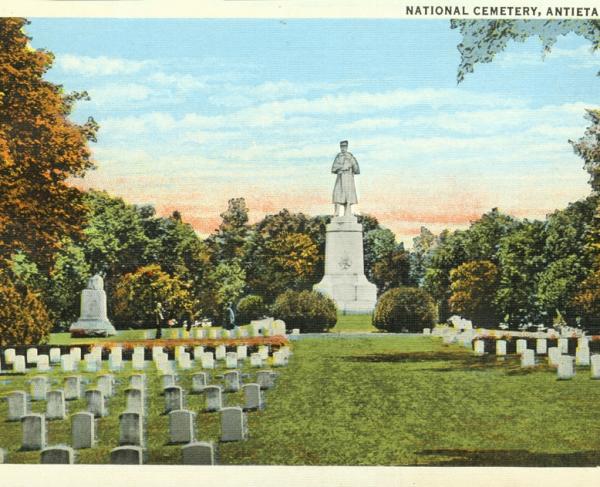"We suffered badly"

Nicholas P. Picerno

The Civil War Trust is currently working to preserve six acres of the East Woods at the Antietam battlefield. Historian Nicholas P. Picerno, the leading expert on the 10th Maine Regiment describes, the Mainers' experience on the land we are hoping to save.
In 1889, veterans of the 10th Maine Infantry made an excursion to the battlefields in Pennsylvania, Virginia and Maryland, where the regiment had fought during the Civil War. When they visited Antietam on Friday, October 4, it was the first time they had returned to these fields since the battle in 1862. Trees had been cut, and a new lane (now known as Mansfield Avenue) had been created exactly along their battle line. They felt, however, that the battlefield retained its "natural look" as they recalled the storm of battle that had occurred twenty-seven years earlier. For months these veterans had awaited with great anticipation their visit. Antietam was a very special place, and what they witnessed there was forever etched in their memory.
The men of the 10th Maine awakened at 5:30 A.M. the morning of September 17. For many, it would be their last sunrise. Shortly afterwards, General Mansfield ordered his corps to advance, and Colonel George L. Beal led the 10th Maine towards the field of battle, their brigade in advance of the Twelfth Corps. Adjutant John Mead Gould wrote afterward, "the ball opened by cannonading and musketry."

The regiment advanced south alongside Smoketown Road and deployed facing East Woods. Colonel Beal positioned his companies on both sides of Smoketown Road as they faced a fierce onslaught of musketry cascading from soldiers belonging to Georgia and Alabama Infantry regiments. Gould remembered, "I could see a rebel regiment marching by the flank toward our right threatening of course the Serg't. with his flag."
Captain George H. Nye of Company K had witnessed the scene of carnage and later penned the following to his wife: "When I went into the fight at Antietam I never expected to leave the field alive, none knew my thoughts but the One above… Capt Furbish was killed close to me, some of his blood flew in my face. I wiped my face and merely looked to see who was killed, in a few seconds his Lieutenant was killed, he was sitting on the fence close to my side, almost at the same instant one of my men was killed close behind me the ball could not have passed more than inch of me. The splinters were flying from the fence and trees." Gould also described Furbish’s death in the East Woods, "without leaving the colors to take his proper position behind the company, he drew his pistol and took deliberate aim at some rebel which attracted his attention, but the enemy's bullet was a second too quick; it killed him instantly before he had discharged his pistol."
General Mansfield rode to the 10th Maine’s position, and Gould could not keep his eyes off the general. He rode in front of the Mainers and beckoned them not to fire as he thought they were firing at Union troops. Mansfield was informed otherwise by one of the 10th Maine’s sergeants. Just after realizing his error and within 20 yards of the Confederate position, the Twelfth Corps commander was mortally wounded. Gould noticed a gust of wind blew the general’s coat skirt aside and revealed that Mansfield had been wounded as well as his horse. Today a mortuary cannon stands as a sentinel near the location of General Mansfield’s mortal wounding.

Staring at Croasdale Knoll during their 1889 visit, the veterans recalled seeing Generals Samuel W. Crawford and Joseph K. F. Mansfield astride their mounts. They recalled witnessing the mortal wounding of General Mansfield while he guided them into East Woods. The site of Mansfield’s wounding was particularly important to these men, and they were determined to ensure that the exact location should not be lost to history.
They also gazed upon the ground, remembered the faces of their dead comrades, and recounted the solemn moment of their deaths. One 10th Mainer, Private Abial H. Edwards of Co. K, recalled the march to the East Woods: "We was marched up to a wood the Rebels being in it then we commenced. It was terrible beyond description- if it had not been for the trees serving as protection for us our regt must have been totally annihilated- as it was we suffered badly." Now as he viewed the battlefield and reflected about the sights that would forever linger in his mind, Edwards stated, "no one can imagine the horrors of a battlefield until they see it, to see thousands of dead beings to see thousands carried off the field wounded-then one can see the horrors of war."

To memorialize their 1889 visit, the 10th Maine veterans chose to have their photograph taken on the battlefield where they had fought. This was not just a section of land; it was much more to these veterans of the 10th Maine. It was upon this land where they witnessed and sacrificed so much so that they could demonstrate the essence of their patriotism. The Mainers posed for their photo on the six-acre tract the Civil War Trust is seeking to preserve. This land, consecrated in 1862 by men from Maine, can now be revered by generations to come.
To learn more about how you can help save this piece of the Antietam battlefield »


